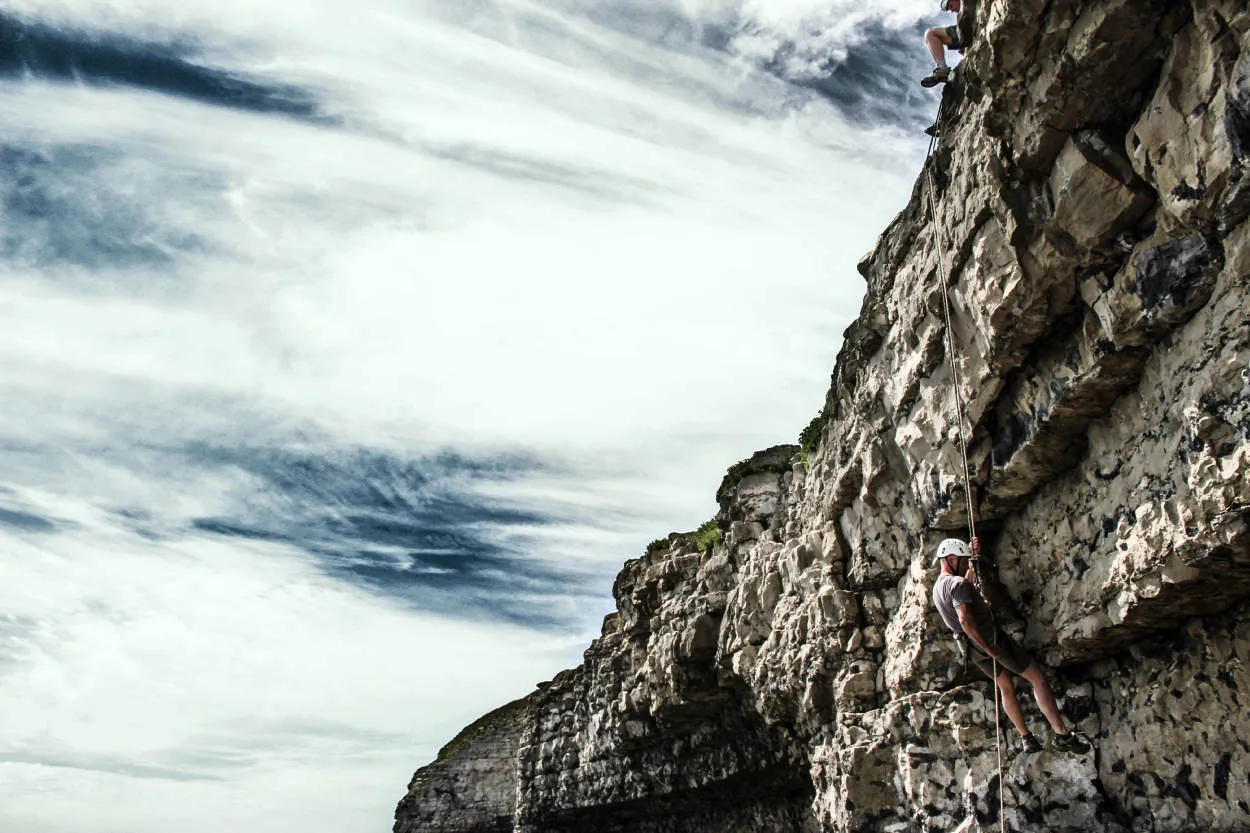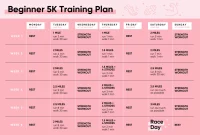Are you an experienced rock climber looking to push your limits higher? In this article, we will explore advanced rock climbing techniques that will take your skills to new heights. From leveraging advanced hand and foot placements to mastering dynamic movements, we’ll equip you with the knowledge to conquer even the toughest routes. Get ready to climb to new heights!
Mastering Difficult Climbing Routes
In the thrilling world of rock climbing, enthusiasts are constantly pushing their limits by tackling increasingly challenging routes. For those looking to elevate their skills and conquer new heights, mastering difficult climbing routes is essential. Here are some advanced rock climbing techniques to help you reach your goals:
1. Strengthen Your Core
A strong core is vital for maintaining balance and stability while navigating difficult climbing routes. Incorporate exercises such as planks, bicycle crunches, and leg raises into your training routine to engage and strengthen your core muscles.
2. Improve Finger and Grip Strength
One of the main challenges in difficult climbing routes is maintaining a strong grip on small holds. Focus on finger and grip strength exercises, such as hangboard training, finger rolls, and forearm curls, to enhance your ability to hold on tight during climbs.
3. Develop Dynamic Movement Skills
Advanced climbing requires dynamic movements such as dynos, leaps, and explosive jumps. Practice these techniques to become comfortable with propelling yourself efficiently between holds and overcoming challenging sections.
4. Learn Advanced Rope Techniques
Difficult climbing routes often involve complex rope maneuvers. Take the time to master techniques such as lead climbing, clipping efficiently, and managing rope drag to navigate these routes safely and effectively.
5. Enhance Mental Focus and Problem-Solving Abilities
Difficult climbs not only test your physical strength but also your mental resilience. Develop strategies to stay focused, manage fear, and solve problems on the fly. Over time, you’ll become more tactical and confident in tackling challenging routes.
Remember, mastering difficult climbing routes requires patience, perseverance, and continuous practice. Push yourself out of your comfort zone, seek guidance from experienced climbers, and never hesitate to challenge yourself in order to climb to new heights.
Training for Endurance and Strength in Climbing
When it comes to advanced rock climbing techniques, endurance and strength are two key factors that climbers need to focus on. Building both physical and mental skills can greatly enhance your climbing abilities and help you push your limits. Here are some effective training methods to improve endurance and strength in climbing:
1. High-Intensity Interval Training (HIIT)
HIIT involves short bursts of intense exercise followed by short rest periods. This type of training mimics the strenuous nature of climbing and helps improve cardiovascular endurance. Incorporate exercises like sprinting, burpees, and mountain climbers to challenge your muscles and increase stamina.
2. Specific Climbing Training
To excel in climbing, it’s essential to include climbing-specific exercises in your training routine. This can involve bouldering, traversing, or climbing on a variety of surfaces and holds to improve strength and technique. Focus on different climbing movements such as crimping, pinching, and slopers to target specific muscle groups.
3. Strength Training
Aside from climbing, incorporating strength training exercises can help build the necessary muscle power. Work on exercises that target core strength, such as planks and hanging leg raises, to improve stability and balance. Additionally, exercises like weighted pull-ups and deadlifts can enhance upper body strength required for climbing.
4. Endurance Training
Improving endurance is crucial for long climbs. Engage in activities like running, cycling, or hiking to boost your cardiovascular fitness. Long, sustained periods of aerobic exercise will build your endurance levels, allowing you to climb for extended periods without fatigue.
5. Mental Training
Climbing requires mental focus and the ability to stay calm under pressure. Incorporate techniques such as visualization, meditation, and breathing exercises into your training to enhance mental resilience. Practicing mental training can help you stay focused, make quick decisions, and overcome challenges while climbing.
Remember, training for endurance and strength in climbing is a gradual process. It’s crucial to listen to your body, take rest days, and gradually increase the intensity of your workouts. With diligent training and a determined mindset, you can reach new heights and achieve your climbing goals.
Mental Strategies for Overcoming Fear
When it comes to advanced rock climbing techniques, one of the most crucial aspects to master is conquering fear. Fear can hold climbers back from pushing their boundaries and achieving new heights. However, with the right mental strategies, it is possible to overcome fear and reach new levels of success in rock climbing.
1. Visualization
Visualization is a powerful tool that can help climbers overcome fear. Before attempting a challenging climb, take a few moments to visualize yourself successfully completing it. Imagine each move, feel the texture of the rock, and experience the sense of accomplishment. By visualizing success, you will build confidence and reduce anxiety.
2. Breathing Techniques
Fear often leads to shallow and rapid breathing, which can increase anxiety and tension. To counteract this, focus on deep, slow breaths. Take a moment to pause, inhale deeply through your nose, and exhale slowly through your mouth. This will help calm your mind and relax your body, allowing you to approach the climb with a clear and focused mindset.
3. Positive Self-Talk
Replace negative thoughts with positive affirmations. Instead of telling yourself, “I can’t do this,” reframe your mindset to say, “I am capable and prepared.” Remind yourself of past climbing achievements and the progress you have made. Positive self-talk can shift your mindset and give you the confidence boost needed to face challenging climbing routes.
4. Breaking Down Challenges
Large, intimidating climbs can be overwhelming. Break them down into smaller, more manageable challenges. Focus on one move at a time, rather than the entire route. By approaching the climb in smaller sections, you can stay focused and maintain a positive mindset throughout the ascent.
5. Trust in Your Skills
Build confidence in your climbing abilities by consistently practicing and honing your skills. Take the time to train and develop techniques specific to rock climbing. The more you trust in your abilities and knowledge, the easier it will be to overcome fear and take on new challenges.
Remember, fear is a natural response when faced with dangerous or unfamiliar situations. However, by employing these mental strategies, you can harness fear and turn it into fuel for personal growth in advanced rock climbing. Be patient with yourself, trust the process, and continue to push your limits to reach new heights.
Equipment Tips for Advanced Climbers
As an advanced climber, having the right equipment is crucial to ensure your safety and enhance your performance. Here are some essential equipment tips to consider before embarking on your next rock climbing adventure:
1. Climbing Harness
Invest in a high-quality climbing harness that fits you well. Look for one with adjustable leg loops and waist belt for a secure and comfortable fit. Ensure the harness has multiple gear loops to accommodate your climbing gear.
2. Climbing Shoes
Choose a pair of climbing shoes that provide the right balance between sensitivity and support. Opt for shoes with a snug fit to improve your grip on the rock. Consider the type of climbing you will be doing and choose shoes accordingly (e.g., stiff-soled for edging or soft and sensitive for smearing).
3. Climbing Rope
Look for a dynamic climbing rope that meets your specific needs. Consider the diameter, length, and weight of the rope. Thicker ropes offer greater durability, while thinner ropes are lighter and easier to handle. Choose a length suitable for the routes you plan to climb.
4. Carabiners and Quickdraws
Select a variety of carabiners and quickdraws for different climbing situations. Make sure they are strong, lightweight, and easy to manipulate. Consider the gate type (e.g., solid gate or wire gate) and choose ones that suit your preferences.
5. Helmet
Never compromise on safety when it comes to climbing helmets. Invest in a helmet that provides adequate protection against falling rocks or accidental impacts. Look for a helmet that fits well and is comfortable for long hours of wear.
6. Climbing Protection
Depending on the type of climbing you do, acquire the necessary climbing protection, such as nuts, cams, and hexes. Familiarize yourself with placement techniques and learn how to assess the stability of these placements.
Remember, having the right equipment is only one aspect of advanced rock climbing. Continuous practice, proper training, and knowledge of advanced climbing techniques are equally important for a successful and enjoyable climbing experience.
Learning from Professional Climbers
When it comes to advanced rock climbing techniques, there is much to be learned from professional climbers. These individuals have dedicated themselves to mastering the craft and have valuable insights to share. Here are a few key lessons we can all take away from them:
1. Technique is Everything
One thing that sets professional climbers apart is their focus on technique. They understand that efficient movement is essential for success and safety. By studying their techniques and practicing them diligently, aspiring climbers can improve their skillset and overcome even the most challenging routes.
2. Mental Strength and Focus
Climbing at advanced levels requires immense mental strength and focus. Professional climbers have honed their ability to stay calm and focused in intense situations. Developing mental resilience is crucial for tackling difficult climbs and can be achieved through practice, meditation, and visualization.
3. Physical Training and Conditioning
Professional climbers dedicate significant time to physical training and conditioning. They understand the importance of building core strength, improving flexibility, and developing muscular endurance. Incorporating a well-rounded training routine that includes exercises such as pull-ups, core workouts, and yoga can greatly enhance climbing performance.
4. Risk Management
Professional climbers are experts in risk management. They carefully assess the potential dangers and plan accordingly. This includes gathering information about the climb, using proper safety equipment, and knowing when to make calculated decisions to retreat. Learning from their approach can help climbers mitigate risks and climb safely.
5. Learning from Failure
Even professional climbers experience failure and setbacks. However, they see these moments as opportunities for growth and learning. Embracing failure, analyzing mistakes, and adapting their strategies are key skills that can be applied to any pursuit, not just climbing.
By studying and internalizing the lessons from professional climbers, aspiring climbers can elevate their skills, overcome challenges, and reach new heights in their climbing journey. Remember, becoming an advanced rock climber is a continuous learning process that requires dedication, perseverance, and a thirst for knowledge.
Conclusion
Advanced rock climbing techniques open up new possibilities and challenges for climbers. These techniques, such as dynamic movements, inverted climbing, and crack climbing, require both physical skill and mental focus. By mastering these techniques, climbers can push their limits and experience the thrill of reaching new heights in their climbing journey.




